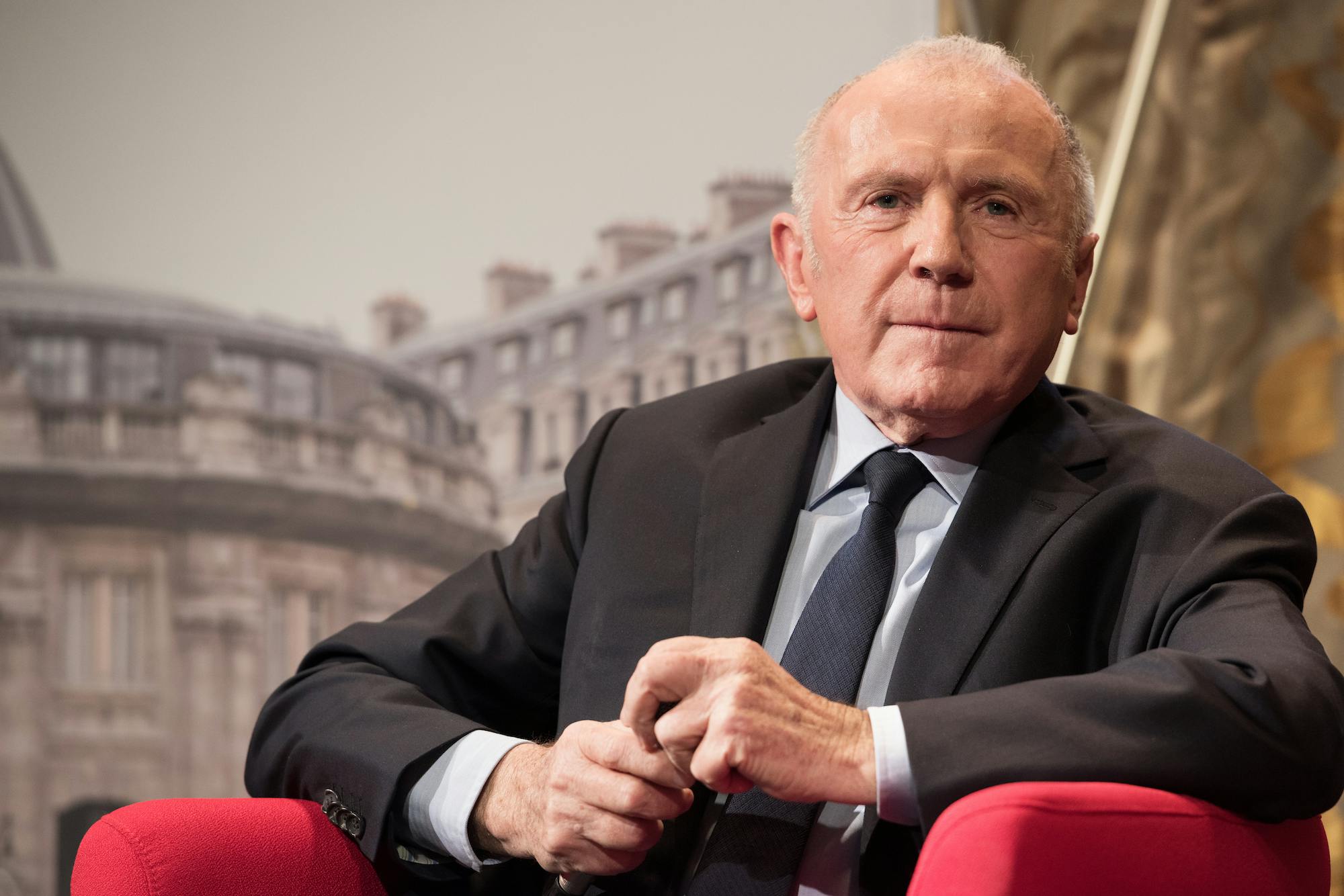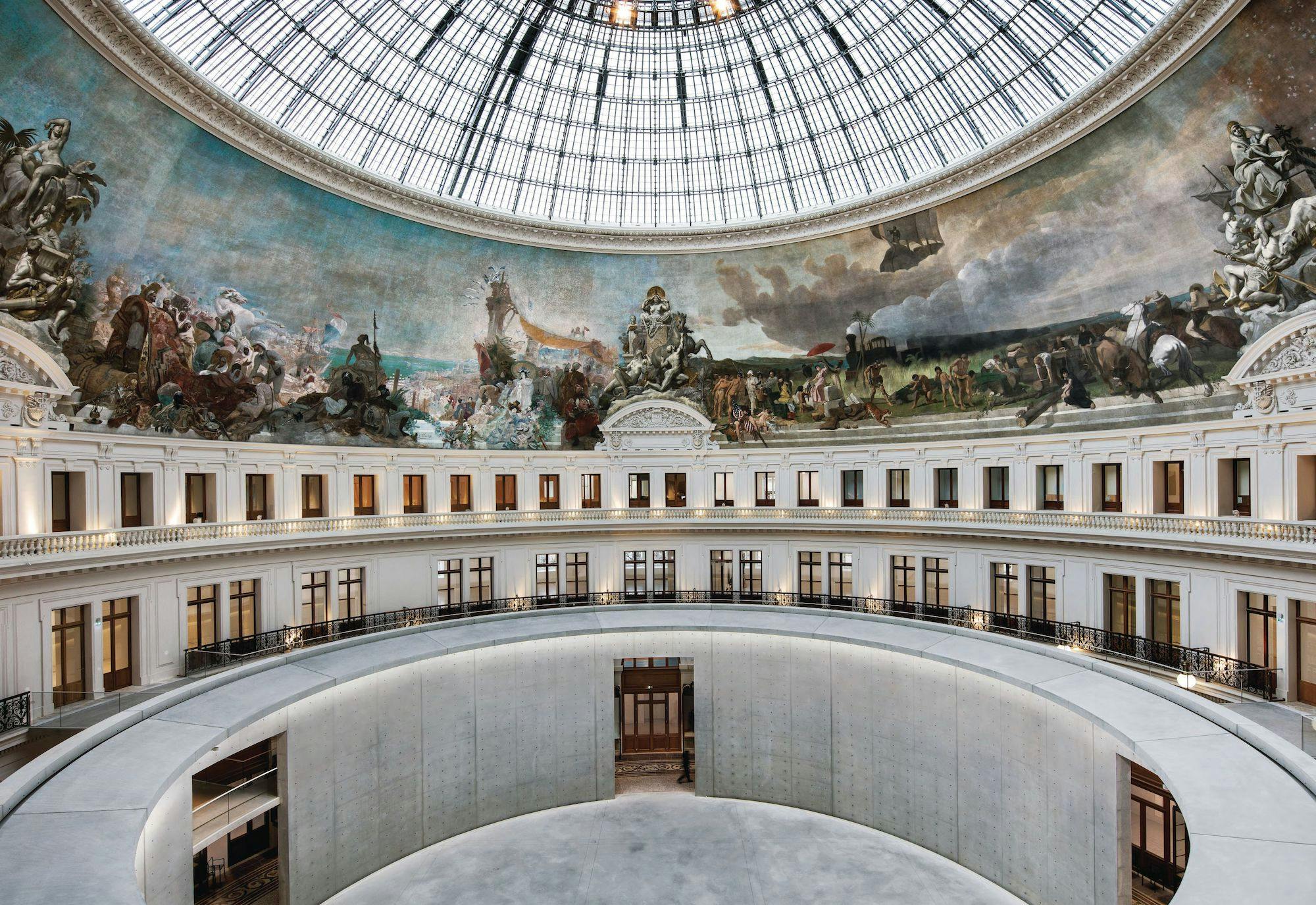François Pinault: the enduring legacy of a French collector in Paris´ heart

During the last few decades, French billionaire and luxury-magnate François Pinault has amassed a contemporary art collection of more than 10,000 artworks spanning three exhibition spaces. Two of them are based in Venice and his latest venture, named The Bourse de Commerce — Pinault Collection, is a state-of-the-art contemporary art museum built inside an 18th-century historic building in Paris. This post explores Pinault´s art collecting practice and dives into his newly-opened museum conveniently located a few minutes away from the Louvre and the Pompidou Center.
The story behind Pinault, the billionaire
Pinault (b. 1936, Champs Géraux, Côtes-du-Nord, France), 84, has not followed a traditional path to success. Born in rural Brittany, Pinault is a self-made billionaire, who started in his family’s timber business and who, as he shared with Jackie Wullschlager from The Financial Times, dropped out of school at the age of 16 to work in his family’s sawmill and then, in 1962, created his own timber company.
As time went by, Pinault got involved in the luxury sector, and, after creating a diverse set of companies, in 1999, transformed Kering into a holding company for luxury goods which owns brands such as Gucci, Alexander McQueen, and many others. Within France and elsewhere he is one of the foremost figures in fashion and is known for his aggressive business tactics. His influence is also widely known in the art world. In 1998, he bought a majority stake in Christie’s for $1.2 billion, explained an ArtNews profile.
With an estimated net worth of $45 billion, Pinault is also a philanthropist committed to the restoration of historic buildings. For example, he funded the restoration of the writer Victor Hugo’s house on the island of Guernsey and he pledged millions of euros to restore Notre Dame following its 2019 fire. More so, as stated in Town and Country, restoration has been a huge part attached to many of the exhibition spaces that house his collection.
Pinault´s art collection: a decades-long and fast-paced journey
Pinault started his art collecting journey by buying modern artworks. The first painting he acquired, in London, was Cour de ferme en Bretagne by French artist Paul Sérusier, in 1972. The collector had a personal connection with this work given, as he shared in an interview, it depicted a Bretonne scene of a farm with an old woman that reminded him of his grandmother. After that purchase, he increasingly got interested in 20th-century art and put his eyes towards Surrealist and Cubist artists. One of his landmark purchases was Mondrian's Tableau Losangique II, which he purchased for $8.8m in 1990.
However, one faithful day more than 40 years ago, Pinault decided to shift from acquiring modern artworks to contemporary art. As for why, he once said that with art from the postwar period onwards, “one could still find major things”. “Everything earlier was already in museums, it was too late,” adding, “then—voilà!—I arrived at the contemporary. Two things mattered: the first, to do with my character, my curiosity for knowledge; the second, to be able to buy artists who count.”
To get a glimpse of Pinault´s fast acquisition pace, by the early 2000s he had acquired more than 2,000 works of art, and these days he owns over 10,000 by almost 400 artists. This means he has purchased around 8,000 works in less than 15 years! His collection features paintings, sculptures, videos, photographs, audio works, installations, and performance pieces. The artists he collects come from all over the world and represent every age group. They include, just to name a few, Cy Twombly, Cindy Sherman, Damien Hirst, Jeff Koons, and Marlene Dumas. As stated in Pinault´s new museum website, “this ensemble, dedicated to art from the 1960s to the present day, presents a vision of the art of our times, through the gaze of a passionate art lover, offering a subjective perspective that reflects its era.”
Over the years, Pinault, now retired, has made it a rule to try and see all the artworks he buys, frequently making studio visits and acquiring works directly from the artists. He has also developed close relationships with these artists. For example, more than 30 years ago he met David Hammons, a generally reclusive artist, and has been friends with the artist ever since. As for how he decides what works to acquire he once shared in an interview: “A good collector needs an eye, emotion, the capacity to feel something in a work. You can be a cold brute in business; you don’t need feelings: it’s effective to eliminate them. But in art, everything is about emotion.”
Also, it needs to be said, Pinault´s art collecting practice and his involvement with the art world, in general, has frequently been compared to the one of Bernard Arnault, another important French art collector and luxury magnate who has been widely considered as his business rival and who also has a contemporary art museum standing at the Bois de Boulogne in Paris. Even if that rivalry is true, for us art lovers, what matters is that, while following their convictions and agendas, they both have opened contemporary art museums, supported the arts, and contributed to financing different art projects that would not have come to fruition weren’t it not for their financing.
The Bourse de Commerce: Pinault's Paris dream comes true

For Pinault, opening a museum in Paris has been a dream for more than 20 years. Years before the Bourse de Commerce project, Pinault tried to build a museum on an island where an abandoned Renault plant stood silent in the River Seine three miles from the Eiffel Tower. However, when that plan was canceled due to lack of permits, he decided to move his collection to Venice and built two museums on historic sites. In 2006, Palazzo Grassi opened on the Grand Canal, and Punta della Dogana followed, in 2009. Both of them were designed by Pinault´s go-to architect, Tadao Ando, reported The Guardian.
As years went by, Pinault didn't take his eyes off of Paris and eventually secured a project at the historic building of The Bourse de Commerce. As Mara Hoberman explained in Art Forum, the oldest part of the building, the Medici Column on the north side, was commissioned by Queen Catherine de Medici in the sixteenth century and was once attached to her private residence. However, most of the structure that we see nowadays was erected in the late 18th century to be a grain exchange, and a century later was modified to house the commodities exchange of Paris. Here, a myriad of products, such as cocoa, sugar, coffee, and other commodities stemming from France's colonial expansionism were priced for Western consumption, detailed The Wall Street Journal.
Now, when Pinault, not one to shy away from challenges, decided to tackle this historic landmark; he must have known this would involve a long, arduous, and detailed planning stage and almost endless negotiations with the city's authorities. As with his other signature museums, Pinault commissioned Japanese architect Tadao Ando (TAAA – Tadao Ando Architect & Associates) next to NeM agency / Niney et Marca Architects, and the Pierre-Antoine Gatier agency to transform this building into a contemporary art museum.
Ando´s project took four years and entailed a price tag of $194 million. Its main element is the 108-foot-diameter concrete cylinder constructed inside the building´s central rotunda which creates a display area while retaining the framework of the original structure, reported The New York Times. Inside the cylinder, one can find the main exhibition space and an auditorium in the basement and the outer façade encloses a corridor, an internal passageway between the concrete wall, and the facade of the original building designed by Henri Blondel. This internal passageway rises to the upper floor of the cylinder, providing access to a circular walkway. Next to 10 exhibition galleries the museum also has a restaurant overseen by Michelin-starred chef Michel Bras. Regarding its programming, Martin Bethenod, director of the Pinault Collection, told The Art Newspaper that he plans to set up around 15 new projects each year, but that the first changes will have to wait till next year.
Even if all of the elements of the building are newly renovated, a main area of focus for visitors are the antique murals surrounding the base of the column. Rather than covering them up due to their depictions of discrimination and oppression, Pinault left them visible. The murals titled Triumphal France were commissioned during the same time as the Eiffel tower and represent French trade across the continents by portraying colonizers encountering bare-chested African warriors and seminude Native Americans. While the decision of showcasing the murals was controversial, instead of eluding it, some of the contemporary artworks displayed in the politically-charged opening exhibition directly confront the topics depicted on these murals creating yet another layer of meaning where the past and present collide. For example, as The Art Newspaper reported, David Hammons, who saw the murals beforehand and who exhibits 30 works in the opening exhibition, requested his installation Minimum Security, that evokes a visit to death row at San Quentin State Prison, to be located along a wall of the Bourse decorated with giant antique maps illustrating the era’s trade routes and Europe’s naval dominance.
Next to Hammons´ works, the Bourse’s opening show featured many works that are on view for the first time and includes many mid-career French artists, such as Pierre Huyghe and Philippe Parreno; older local legends less known outside the country like Bertrand Lavier and Martial Raysse, and rising stars such as Claire Tabouret, and Lili Reynaud-Dewar. Also, in the center of the huge-scale rotunda, stands an ephemeral work by renowned Swiss artist Urs Fisher. The artist created a perfect wax replica of the 16th-century Abduction of the Sabine Women by the Flemish sculptor Giambologna that stands in Florence. However, in this case, the huge-scale sculpture was set alight on the opening of the museum and will burn for the six months of the opening exhibition. As Béthenod, the museum's director, stated to The Guardian, this sculpture “is a monument to the impermanence and fragility of things and the passage of time.”
As for what the future holds for this museum, The Bourse de Commerce has been rented from Paris City Hall on a 50-year lease. This reminds us that the museum’s life span is still uncertain and, for that reason, Ando’s cylinder was designed so that it can be removed once the lease expires, explained The New York Times. However, it is more likely to consider that, if the funding to operate this site is still there, the lease will be extended. Importantly, in addition to marking a life achievement for Pinault, the opening of the Bourse, adds to the efforts of relaunching the Parisian art scene that was once overtaken by Berlin and London but that now has regained its status in the global art world.
Without a doubt, this museum reaffirms Pinault´s reach as an international art collector and patron whose legacy is here to stay through his three privately owned museums and huge art collection. It will be interesting to witness how the programming of his newly-opened Paris museum will contribute to the city's contemporary art scene and we will be sure to keep you posted.

